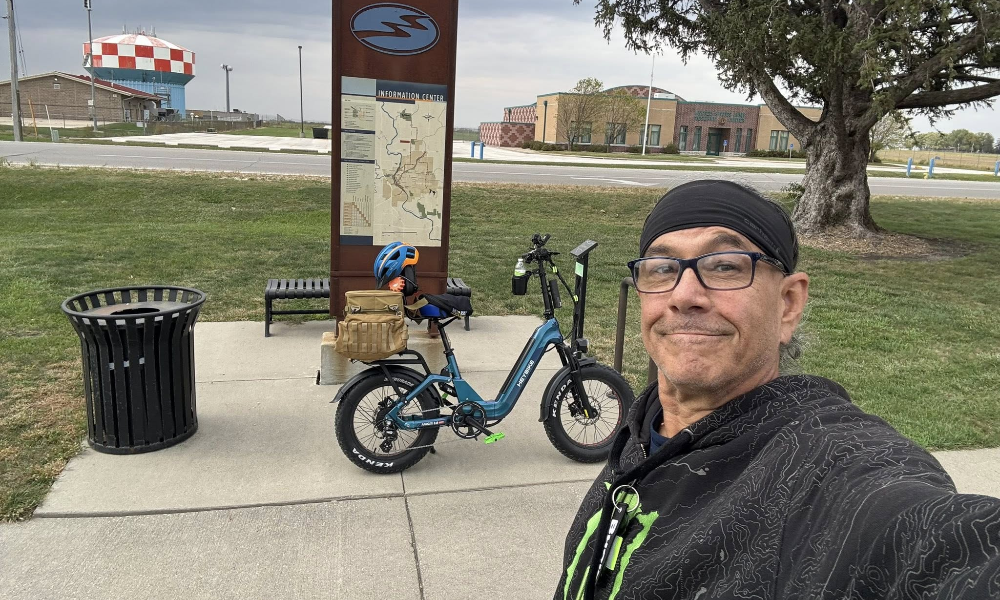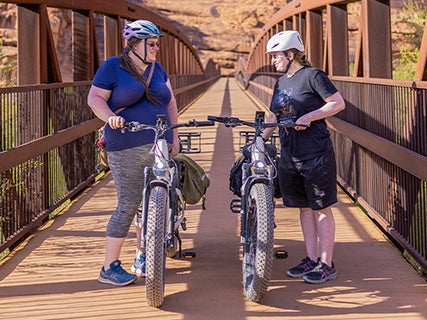Wrist position is an important aspect to consider while cycling. Most cyclists tend to assume their wrists should be flexed, but that isn't the case. It's a compressive position for the wrists because it puts pressure on your tendons and nerves in the capital tunnel. This pressure is the main culprit for cyclist wrist pain, especially if the trail is bumpy. In addition, an inappropriate wrist position can lead to wrist numbness and tingling, which can make your hands weak. There are numerous signs and symptoms of wrist pain: sharp pain, swollen fingers, warmth in the wrist joint, numbness or tingling sensation in the hands, swollen fingers, and redness around the wrist.

Why Wrist Pain Happens While Cycling
Wrist pain occurs when there's too much weight and pressure on your wrists. Exerting too much compressive force on your wrists will affect your tendons and nerves, thus leading to cycling wrist pain. The position of your wrists while cycling is another factor that can cause hand and wrist pain. Based on research, there are two distinct types of neurogenic wrist pain: ulnar nerve pain and carpal tunnel syndrome.
6 Ways to Avoid Wrists Pain During Cycling
1. Check the Fit of Your Bike
Bike setup is a crucial factor that can alleviate wrist pain from cycling. Excessive drop and excessive reach are the main culprits for compression of the ulnar nerve. This is because they put more traction on the nerves and increase the weight on the handlebars. Adjusting reach and drop will help you reduce the risk of cycling wrist pain. There are various aspects to consider when setting up your bike:
- Saddle position
- Handlebar height
- Stem length
- Riding position
In addition, you should adjust the gears and tire pressure to suit your tastes and preferences. In general, lower the height of the handlebar to reduce the center of gravity. Placing more weight over the front wheel will play a vital role in increasing traction and reducing pressure on wrists.
2. Wear Padded Cycling Gloves
Padded gloves are essential safety gear for cycling. They play a significant role in the control of the handlebars. In addition, padded gloves will increase your grip, helping you hold your wrists in a safe, neutral position. During hot days, sweat can loosen your grip if you aren't wearing the right gloves. Padded gloves are the best for cyclists because they absorb sweat before it becomes a hazard. When it comes to cycling, gloves act as your second skin in case you fall. Gel padding in these gloves acts as a shock absorber, which reduces pressure acting upon your wrists. This helps in preventing hand and wrist pain. There are numerous types of padded gloves on the market. Therefore, choosing the ideal gloves can be daunting and tedious. Below are factors to consider when looking for the best-padded gloves for cycling:
- The material
- Finger design
- Thickness and padding
- Breathability
- Elasticity around the wrist
- Level of water resistance
Padded gloves will prevent wrist pain, improve comfort, increase your grip, and enhance your safety while cycling.
3. Straight Your Wrists Instead of Flexed
Wrist positioning is an essential factor that can lower your risk of developing wrist pain. Your body positioning, which depends on the bike setup, will determine your wrist positioning. Your wrists should always be straight when gripping the handlebars. There should be a straight line from your elbow to the knuckles. Your spine should be in a neutral position, and your shoulders should be relaxed. In addition, ensure your head is in line with your back.
4. Bend Your Elbows
Cycling with relaxed, bent elbows allows your hands to act as suspension. Bending your elbows slightly will help you reduce the impact of hitting a pothole or bump. If you're cycling on a bumpy road, the positioning of your elbows will determine how your wrists react to the compressive pressure. Ensure you tuck your elbows into your sides instead of leaving them wide like wings. Based on research, keeping your elbows bent while cycling will also reduce strains, especially on your shoulders. This gives you an opportunity to ride comfortably with less pressure on your wrists.
5. Regularly Shift Hand Position
Shifting hand position will help you lower the risk of cycling wrist pain. Changing hand positioning frequently will help you be in the best position most suitable for the terrain. Also, it will help you prevent your hands from going numb or developing sores. Mixing up your grip will alleviate the pressure on your wrists, which gives your arms a little break. Keeping your hands in a stationary position increases pressure on your hands and wrists. Therefore, cyclists should change their hand position regularly to mitigate the risk of wrist pain, especially during extended rides.
6. Loosen Up
It's important to loosen up when cycling. Holding the handlebars tightly will increase pressure on your wrists, thus leading to pain and numbness. The upper part of your body should be relaxed to manage the pressure that might occur due to uneven terrain. Loosening your grip while ascending or climbing a mountain will allow your hands to rest. Instead of gripping the handlebars tightly, work on engaging your core so that your hands become relaxed and your upper body gets enough support. This will help you focus on braking, steering, and changing gears. In addition, keeping a smooth curve in your spine will help you maintain a good cycling posture, thus lowering the risks of cycling.
Conclusion
There are various symptoms of wrist pain: sharp pain, swollen fingers, warmth in the wrist joint, numbness, tingling, and redness around the wrist. Cycling can cause wrist pain, especially if the terrain is uneven. It occurs when there's more pressure on your tendons and nerves due to poor wrist and elbow positioning. Severe wrist pain can lower your cycling performance. There are certain ways that can help you prevent wrist pain: loosen up, wear padded gloves, bend your elbows, and shift your hand position regularly. If you're struggling with wrist pain, rest your wrist and apply ice to alleviate the pain.



Share:
Electric Bike Laws in Utah
Why the Electric Bike Size Matters